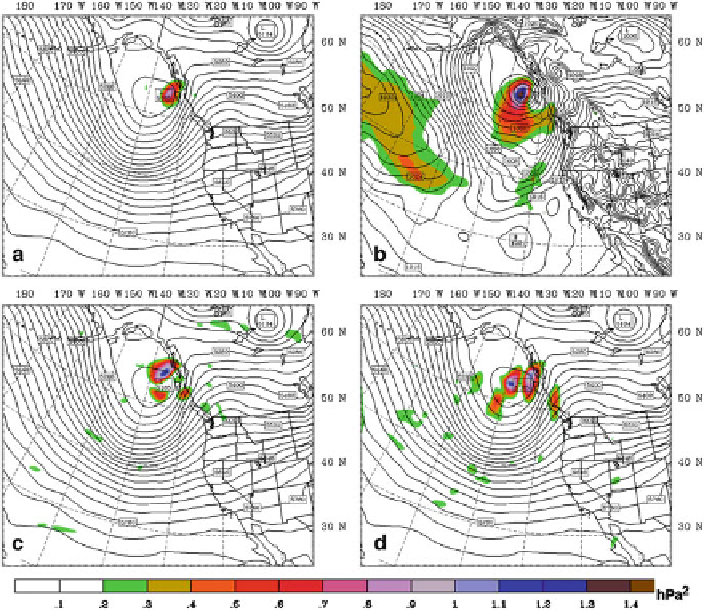Geoscience Reference
In-Depth Information
Variance reduction (
shaded
,hPa
2
/
Fig. 23.3
of the response function estimated from a single
observation at the level of the maximum variance reduction for (
a
) temperature (
380
hPa), (
b
)
pressure (
hPa) valid at
0600 UTC November 9, 2009. Ensemble mean sea-level pressure (panel b,
black contours
, contour
interval is 2 hPa) and 500-hPa geopotential height (panels a, c, and d,
black contours
, contour
interval is 30 m) are also shown
930
hPa), (
c
) zonal wind (
750
hPa), and (
d
) meridional wind (
880
observation targets can exist in relatively distant areas from the regions of large
adjoint sensitivity, sometimes indicating larger impacts than the regions of large
adjoint sensitivity itself. An important consequence of this characteristic are that
targeting regions based on observation sensitivity can differ strongly from those
based on adjoint sensitivity, indicating the importance of observation sensitivity
for adaptive data assimilation techniques as discussed in Sect.
23.2
. As pointed
out, Fig.
23.3
shows the Pacific high surface pressure to be an important targeting
region, even though it is likely far upstream from the area of large adjoint sensitivity
(typical adjoint sensitivity fields associated with cyclones are shown by
Ancell and
Mass 2006
;
Ancell and Hakim 2007a
,bin similar experimental configurations).
Although perturbing this area of high pressure itself would do little to the 24-h
forecast of the land-falling cyclone, information spread during assimilation of
observations of the area of high pressure into regions of large dynamic sensitivity
downstream would act to significantly influence the forecast of the cyclone.

Search WWH ::

Custom Search